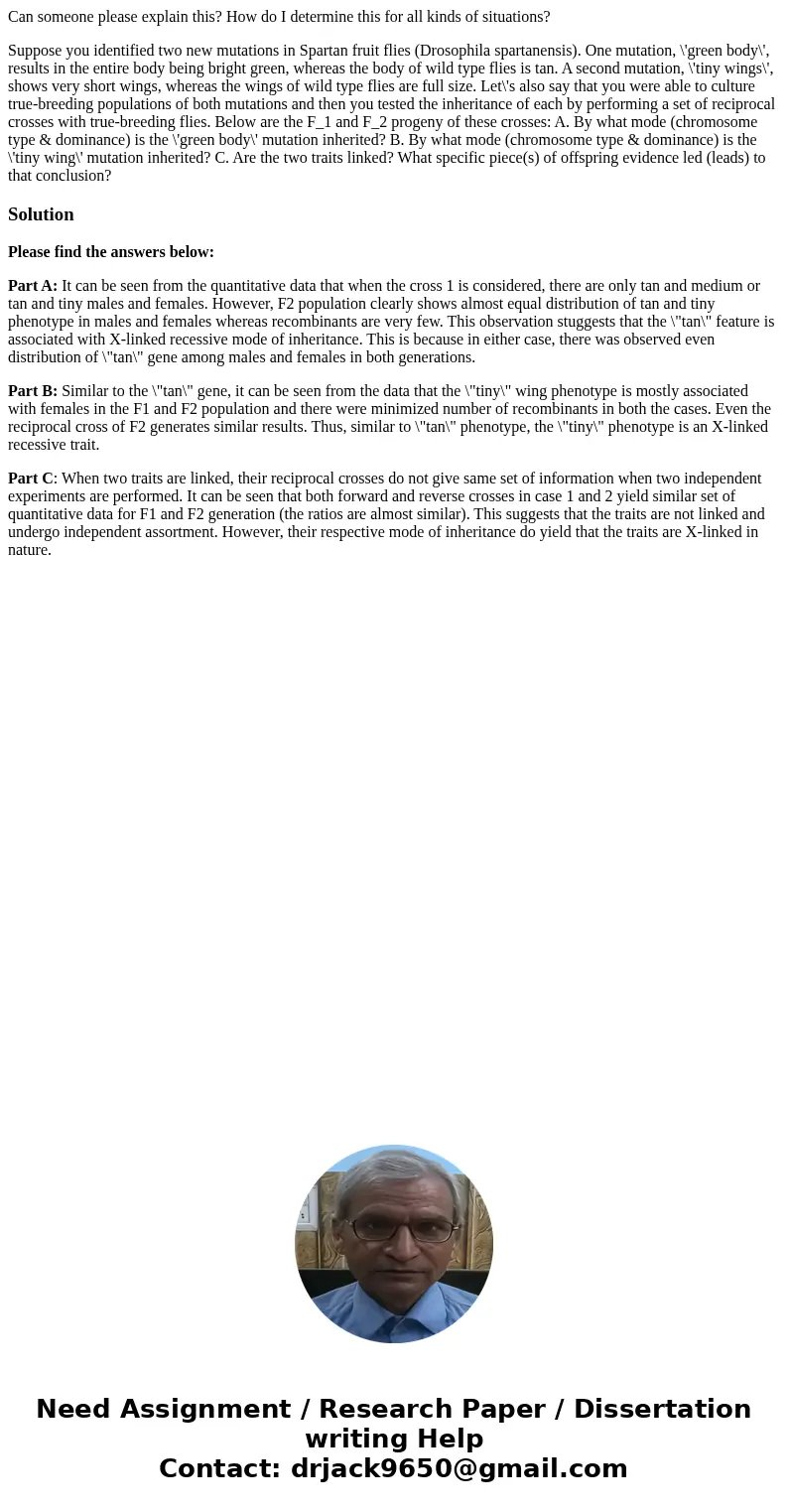Can someone please explain this How do I determine this for
Can someone please explain this? How do I determine this for all kinds of situations?
Suppose you identified two new mutations in Spartan fruit flies (Drosophila spartanensis). One mutation, \'green body\', results in the entire body being bright green, whereas the body of wild type flies is tan. A second mutation, \'tiny wings\', shows very short wings, whereas the wings of wild type flies are full size. Let\'s also say that you were able to culture true-breeding populations of both mutations and then you tested the inheritance of each by performing a set of reciprocal crosses with true-breeding flies. Below are the F_1 and F_2 progeny of these crosses: A. By what mode (chromosome type & dominance) is the \'green body\' mutation inherited? B. By what mode (chromosome type & dominance) is the \'tiny wing\' mutation inherited? C. Are the two traits linked? What specific piece(s) of offspring evidence led (leads) to that conclusion?Solution
Please find the answers below:
Part A: It can be seen from the quantitative data that when the cross 1 is considered, there are only tan and medium or tan and tiny males and females. However, F2 population clearly shows almost equal distribution of tan and tiny phenotype in males and females whereas recombinants are very few. This observation stuggests that the \"tan\" feature is associated with X-linked recessive mode of inheritance. This is because in either case, there was observed even distribution of \"tan\" gene among males and females in both generations.
Part B: Similar to the \"tan\" gene, it can be seen from the data that the \"tiny\" wing phenotype is mostly associated with females in the F1 and F2 population and there were minimized number of recombinants in both the cases. Even the reciprocal cross of F2 generates similar results. Thus, similar to \"tan\" phenotype, the \"tiny\" phenotype is an X-linked recessive trait.
Part C: When two traits are linked, their reciprocal crosses do not give same set of information when two independent experiments are performed. It can be seen that both forward and reverse crosses in case 1 and 2 yield similar set of quantitative data for F1 and F2 generation (the ratios are almost similar). This suggests that the traits are not linked and undergo independent assortment. However, their respective mode of inheritance do yield that the traits are X-linked in nature.

 Homework Sourse
Homework Sourse